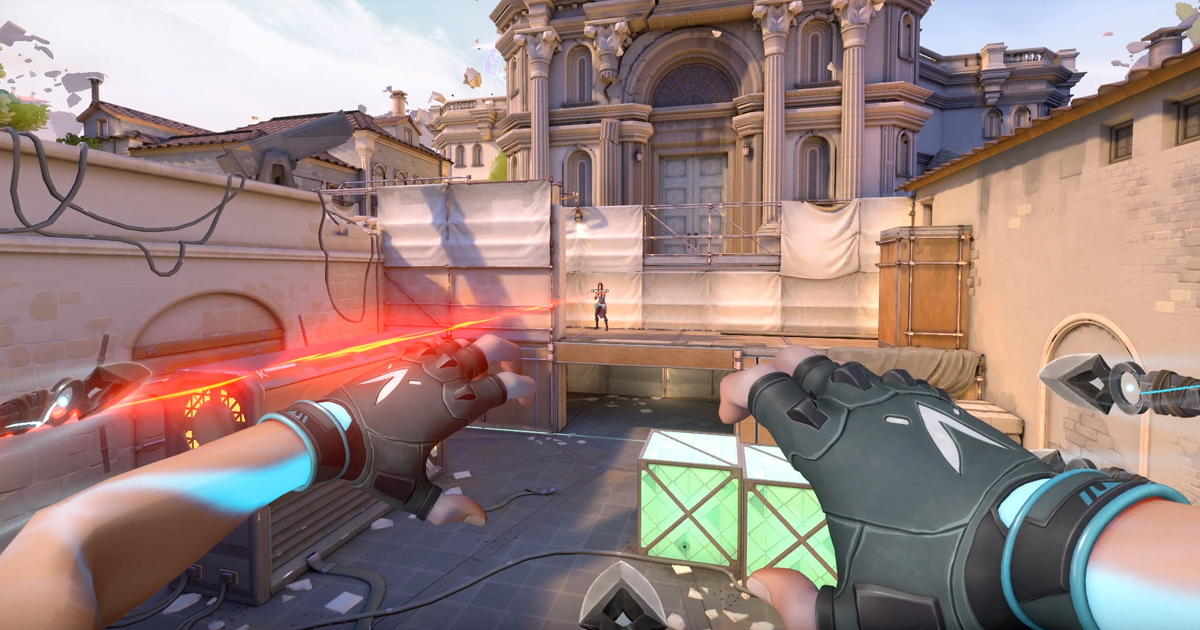5 game studios that switched to Unreal Engine for flexibility and new hiring opportunities
In the wake of CD Projekt RED’s announcement to use UE5 for a new Witcher game, we’ve rounded up a few other studios that have switched to Unreal Engine. Epic’s framework provides devs with more opportunities and better documentation, and, importantly, it also makes hiring new people a lot easier.
CD Projekt RED
On March 21, the Polish studio confirmed that a new Witcher game is now in the making. And this time CDPR is using Unreal Engine 5 instead of its own proprietary technology.
It is a remarkable shift for the company, which has been making its titles with REDengine ever since the release of The Witcher 2: Assassins of Kings in 2011. The list of other products built with this technology includes The Witcher 3: Wild Hunt and Cyberpunk 2077 (REDengine is still being used for the game’s upcoming expansion).
It is also worth noting that the first Wticher, released in 2007, was made with a modified version of Aurora Engine, a proprietary technology created by BioWare and utilized in games like Neverwinter Nights.
So CD Projekt RED is now getting back to using third-party solutions, and Unreal Engine 5 seems like a great choice for the studio’s next AAA title. On top of that, it announced a strategic partnership with Epic Games, which should help “tailor the engine for open-world experience.”
Here is what the studio’s CTO Paweł Zawodny said: “It is vital for CD Projekt RED to have the technical direction of our next game decided from the earliest possible phase as; in the past, we spent a lot of resources and energy to evolve and adapt REDengine with every subsequent game release.”
Using UE5, CDPR will also get new hiring opportunities as it would be a lot easier to attract and retain devs with experience of working with Epic’s technology instead of teaching them how to use REDengine.
BioWare
BioWare has a rich history of using both its proprietary technologies and third-party engines:
- The studio first introduced its own technology called Infinity Engine in 1998. It had several successors and modifications, including Aurora, Odyssey, and Eclipse;
- These proprietary engines were utilized in many classic games, including Baldur’s Gate, Star Wars: Knights of the Old Republic, and the first two titles in the Dragon Age series;
- Despite having its own technology, BioWare built the Mass Effect trilogy with a modified version of Unreal Engine 3 along with its own framework specially designed for the series of sci-fi RPGs;
- In 2013, Electronic Arts forced the company to switch to Frostbite, wanting all of its studios to use DICE’s engine. While this framework was great for shooters, it didn’t suit other genres at all;
- The following years were probably some of the most painful for BioWare in terms of programming and desperately trying to make its games — especially Dragon Age: Inquisition — work on DICE’s engine.
However, BioWare eventually abandoned Frostbite when it started developing a new Mass Effect game. Although there are not many details about the upcoming title, it is probably built with Unreal Engine 5.
Last December, BioWare producer Brenon Holmes announced that the studio was hiring “programmers with UE4/5 experience.” The information was also confirmed by several journalists, including Jeff Grubb and Jason Schreier.
So it looks like BioWare could be back in its comfort zone again after spending years struggling with Frostbite.
Respawn Entertainment
Star Wars Jedi: Fallen Order
When Vince Zampella and Jason West founded Respawn in 2010, they chose Valve’s Source as the main engine for their games. It was utilized in Titanfall 1-2 and Apex Legends, the studio’s first title under Electronic Arts.
However, Star Wars Jedi: Fallen Order was built with Unreal Engine 4. As game director Stig Asmussen told Game Informer, it was a natural choice. Respawn wasn’t a part of EA when the Fallen Order development started, so Frostbite wasn’t even an option.
“It made sense for the team,” Zampella said of the use of UE. “As we’re hiring up a new team, it’s easier to find people that have Unreal experience. It was an engine that fit what we were trying to do instead of trying to adapt the Source engine over. So it was just in evaluating all the engines that were available to us.”
Respawn seemingly continues to use Unreal Engine as Apex Legends Mobile, which has already reached over 7.5 million pre-registrations on Android, is reportedly also built with UE4.
The studio is now also working on three new Star Wars games. Although there is no information about the technology they are built with, it is safe to say that Unreal Engine will be utilized in, at least, the Fallen Order sequel.
GSC Game World
S.T.A.L.K.E.R. 2: Heart of Chornobyl
The first S.T.A.L.K.E.R., as well as Clear Sky and Call of Pripyat, were built with GSC’s X-Ray Engine. One of its main features was A-Life, a special technology that was used for different simulations and creating behavior patterns for the game’s NPCs and monsters.
However, the Ukrainian studio abandoned the technology when it started developing S.T.A.L.K.E.R. 2: Heart of Chornobyl.
GSC Game World initially licensed Unreal Engine 4 for its upcoming game. In August 2021, the studio announced that it switched to UE5, sharing a screenshot of the engine’s editor.
The reason behind this decision is unknown, but it would probably be hard to modify X-Ray and add the support of many new technologies and features that have appeared in the market over the last years. In this case, Unreal Engine seems like a great option.
On top of that, the previous S.T.A.L.K.E.R. game came out in 2009, and it’s been more than five years since GSC released its last title, Cossacks 3. So the studio obviously needed to hire new talent for an ambitious AAA project like Heart of Chornobyl, and there are barely any devs with X-Ray experience.
Riot Games
Valorant
Riot’s main hit League of Legends is created with its own technology. It uses a combination of different programming languages, including C++, Lua, C#, Java, and Erlang.
On the other hand, the company has experience of working with other engines. For example, League of Legends: Wild Rift and Legends of Runeterra are built with Unity.
“Unity’s technology enables us to focus on delivering the beloved League of Legends experience to as many players across as many platforms as possible,” Riot’s former head of corporate and business development Brian Cho said back in 2020. “We want to meet our players where they are, and Unity’s world-class tools and platform optimization help us achieve that.”
For its multiplayer shooter Valorant, Riot switched to Unreal Engine 4, saying that Epic’s technology would let it focus on optimizations and gameplay instead of spending much time on building core systems.
“Unreal Engine provides fantastic tools and a set of solid capabilities that serve as Valorant’s foundation. Our engineering team doesn’t spend time reinventing the wheel, and our content developers are highly productive with the editor,” Valorant technical lead Marcus Reid said, adding that the team also heavily modified some of the engine’s elements.
In this case, Riot chose Unreal Engine as the framework that was best for the project. Using its own modifications and the technology’s flexible tools, the studio built a game with low system requirements to reach a wider audience.




